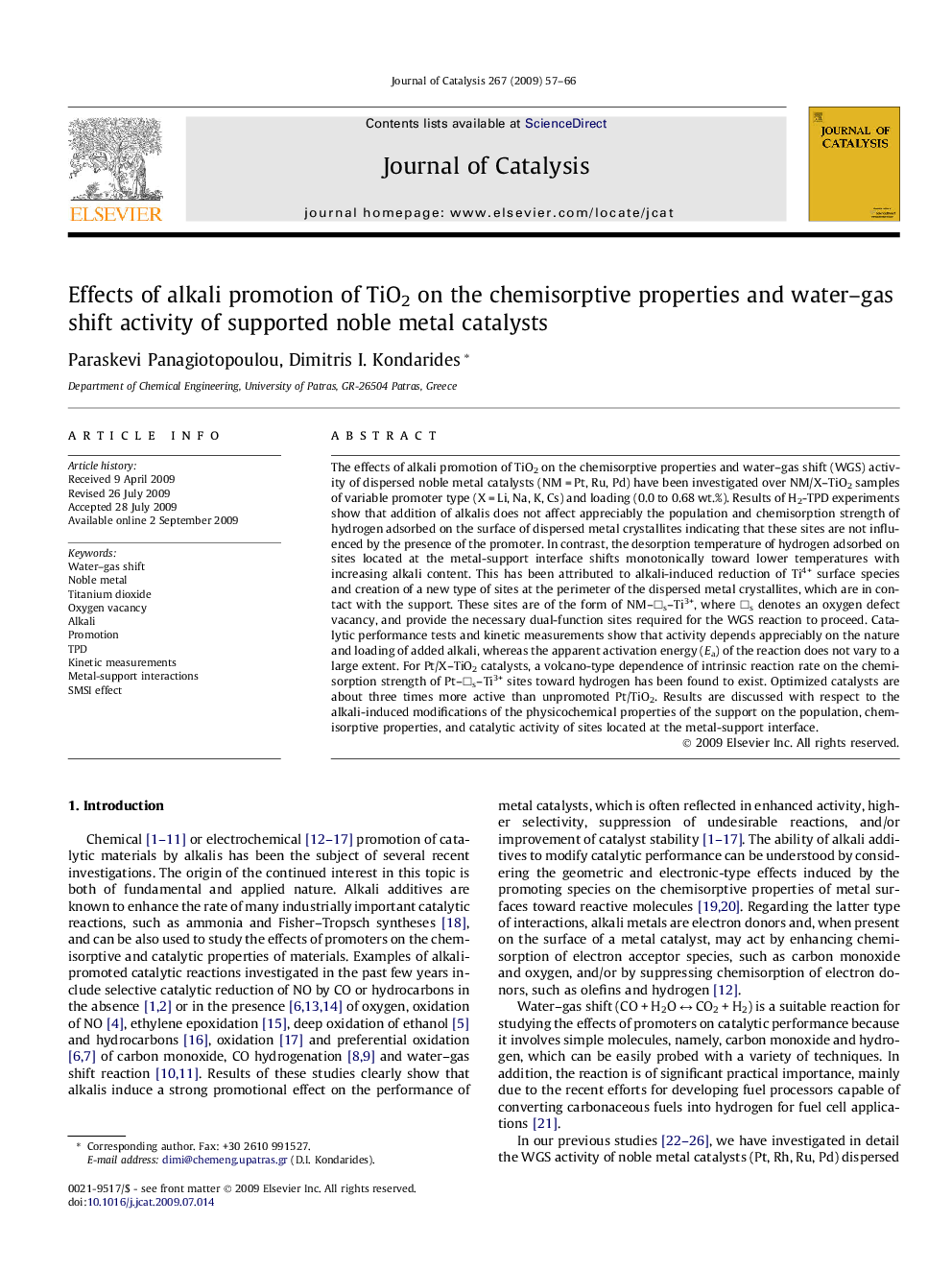| Article ID | Journal | Published Year | Pages | File Type |
|---|---|---|---|---|
| 62146 | Journal of Catalysis | 2009 | 10 Pages |
The effects of alkali promotion of TiO2 on the chemisorptive properties and water–gas shift (WGS) activity of dispersed noble metal catalysts (NM = Pt, Ru, Pd) have been investigated over NM/X–TiO2 samples of variable promoter type (X = Li, Na, K, Cs) and loading (0.0 to 0.68 wt.%). Results of H2-TPD experiments show that addition of alkalis does not affect appreciably the population and chemisorption strength of hydrogen adsorbed on the surface of dispersed metal crystallites indicating that these sites are not influenced by the presence of the promoter. In contrast, the desorption temperature of hydrogen adsorbed on sites located at the metal-support interface shifts monotonically toward lower temperatures with increasing alkali content. This has been attributed to alkali-induced reduction of Ti4+ surface species and creation of a new type of sites at the perimeter of the dispersed metal crystallites, which are in contact with the support. These sites are of the form of NM–□s–Ti3+, where □s denotes an oxygen defect vacancy, and provide the necessary dual-function sites required for the WGS reaction to proceed. Catalytic performance tests and kinetic measurements show that activity depends appreciably on the nature and loading of added alkali, whereas the apparent activation energy (Ea) of the reaction does not vary to a large extent. For Pt/X–TiO2 catalysts, a volcano-type dependence of intrinsic reaction rate on the chemisorption strength of Pt–□s–Ti3+ sites toward hydrogen has been found to exist. Optimized catalysts are about three times more active than unpromoted Pt/TiO2. Results are discussed with respect to the alkali-induced modifications of the physicochemical properties of the support on the population, chemisorptive properties, and catalytic activity of sites located at the metal-support interface.
Graphical abstractThe water-gas shift activity of alkali-promoted Pt/X-TiO2 catalysts (X = Li, Na, K, Cs) exhibits a volcano-type dependence on the chemisorption strength of Pt-□s-Ti3+ sites located at the metal-support interface.Figure optionsDownload full-size imageDownload high-quality image (57 K)Download as PowerPoint slide
